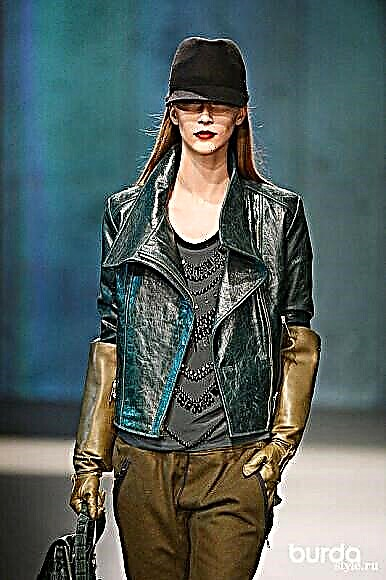Prints come into fashion, go out of it, go to the dustbin of history or wander like fashionists on fashion catwalks, until finally they get bored and surrender under the pressure of new trends.
But there is also a special group of fabric drawings that have already received their “ticket to eternity” and left the “fashionable” category, becoming not only a monumental classic, but also a hallmark of brands that immortalize them. Today, as part of our new Theme of the issue, we invite you to get acquainted with the cult prints of fashion houses!
Louis vuitton
 The success of Louis Vuitton, which opened its first store in 1854, quickly led the market to be filled with fakes for the original bags and wardrobe trunks that the venerable French audience loved so much. Louis Vuitton, who had once come to Paris on foot and conquered him with his skill, thought about a quality mark that would distinguish his goods from fakes. The idea was further developed by his son, George Vuitton, by developing a monogram of the Louis Vuitton brand: a flower with four petals placed in a circle, a rhombus with a four-pointed star, the same star in the negative version and the initials LV. It is this print today that any fashionista unmistakably recognizes.
The success of Louis Vuitton, which opened its first store in 1854, quickly led the market to be filled with fakes for the original bags and wardrobe trunks that the venerable French audience loved so much. Louis Vuitton, who had once come to Paris on foot and conquered him with his skill, thought about a quality mark that would distinguish his goods from fakes. The idea was further developed by his son, George Vuitton, by developing a monogram of the Louis Vuitton brand: a flower with four petals placed in a circle, a rhombus with a four-pointed star, the same star in the negative version and the initials LV. It is this print today that any fashionista unmistakably recognizes.
Gucci
 A charming floral print Flora was born, thanks to the Princess of Monaco Grace Kelly.According to history, in 1966, the princess and her husband went to the Milan Gucci store for the famous Bamboo bag. One of the sons of the brand’s founder, Rodolfo Gucci, suggested that the princess choose a gift for herself, and Grace, who loved neck scarves, decided to choose just such an accessory, but was unsatisfied with the proposed ornaments. Then Rodolfo Gucci turned to the artist Vittorio Accornero, who in one night managed to develop a print worthy of a princess. Since then, over and over again, Gucci has come up with new variations of the famous pattern, while remaining faithful to tradition and introducing an element of experimentation.
A charming floral print Flora was born, thanks to the Princess of Monaco Grace Kelly.According to history, in 1966, the princess and her husband went to the Milan Gucci store for the famous Bamboo bag. One of the sons of the brand’s founder, Rodolfo Gucci, suggested that the princess choose a gift for herself, and Grace, who loved neck scarves, decided to choose just such an accessory, but was unsatisfied with the proposed ornaments. Then Rodolfo Gucci turned to the artist Vittorio Accornero, who in one night managed to develop a print worthy of a princess. Since then, over and over again, Gucci has come up with new variations of the famous pattern, while remaining faithful to tradition and introducing an element of experimentation.
Versace
 The famous Versace prints - with the head of the Medusa Gorgon - appeared thanks to the passion of the brand's founder, Gianni Versace, in ancient Greek mythology. Of course, we all know the myth of Medusa, according to which one look in her eyes turned the one who looked at the stone, but the temptation was so great, and the beauty of Medusa was so attractive that it was impossible to either look away or give up the temptation! In this story, no matter how you look, there is enough tragedy, but Gianni Versace made this image a mystical symbol of hypnotic and intriguing beauty, which to this day adorns the creations of this fashion house.
The famous Versace prints - with the head of the Medusa Gorgon - appeared thanks to the passion of the brand's founder, Gianni Versace, in ancient Greek mythology. Of course, we all know the myth of Medusa, according to which one look in her eyes turned the one who looked at the stone, but the temptation was so great, and the beauty of Medusa was so attractive that it was impossible to either look away or give up the temptation! In this story, no matter how you look, there is enough tragedy, but Gianni Versace made this image a mystical symbol of hypnotic and intriguing beauty, which to this day adorns the creations of this fashion house.
Fendi
 In 1925, a married couple, Eduardo and Adele Fendi, opened a shop in Rome where they presented leather goods sewn by them. High quality and attractive design quickly won the love of Italian fashionistas. In 1952, the daughters who continued the work of their parents invited Karl Lagerfeld for cooperation, who made Fendi the way we know him.It was Lagerfeld who designed the logo in the form of a double letter F, in honor of the founding spouses.
In 1925, a married couple, Eduardo and Adele Fendi, opened a shop in Rome where they presented leather goods sewn by them. High quality and attractive design quickly won the love of Italian fashionistas. In 1952, the daughters who continued the work of their parents invited Karl Lagerfeld for cooperation, who made Fendi the way we know him.It was Lagerfeld who designed the logo in the form of a double letter F, in honor of the founding spouses.
Burberry
 We have recently talked about the famous Nova Check cage, but this pattern cannot be ignored in terms of brand prints either. Burberry actively popularized the original ornament, turning it into a print that can be found on anything today, from simple slippers to umbrellas.
We have recently talked about the famous Nova Check cage, but this pattern cannot be ignored in terms of brand prints either. Burberry actively popularized the original ornament, turning it into a print that can be found on anything today, from simple slippers to umbrellas.
Paul smith
 The circumstances are different, and the world famous fashion designer, whose brand has become one of the synonyms of the classic British style, could become an athlete. However, a serious injury did not allow Paul Smith to pursue a sports career, but he quickly achieved success in the field of fashion. The main symbol of the brand has become a multi-colored “zebra”, which perhaps indicates that, according to Smith, life is not a series of black and white stripes of successes and failures, but a bright explosion of various colors.
The circumstances are different, and the world famous fashion designer, whose brand has become one of the synonyms of the classic British style, could become an athlete. However, a serious injury did not allow Paul Smith to pursue a sports career, but he quickly achieved success in the field of fashion. The main symbol of the brand has become a multi-colored “zebra”, which perhaps indicates that, according to Smith, life is not a series of black and white stripes of successes and failures, but a bright explosion of various colors.
Missoni
 The history of the Missoni brand began in 1946 when the Italian Ottavio Missoni and his wife Rosita opened a small knitwear factory. Oddly enough after talking about Paul Smith, but Missoni initially planned to sew clothes for athletes, since Ottavio Missoni was involved in athletics, and it was the strip that was planned as the main pattern! In 1948, the firm did succeed, and the Missoni Venjulia costume line became the official form of the Italian team at the London Olympics. Later, Rosita Missoni came up with the use of a zigzag, and it was this pattern that became the hallmark of the brand.
The history of the Missoni brand began in 1946 when the Italian Ottavio Missoni and his wife Rosita opened a small knitwear factory. Oddly enough after talking about Paul Smith, but Missoni initially planned to sew clothes for athletes, since Ottavio Missoni was involved in athletics, and it was the strip that was planned as the main pattern! In 1948, the firm did succeed, and the Missoni Venjulia costume line became the official form of the Italian team at the London Olympics. Later, Rosita Missoni came up with the use of a zigzag, and it was this pattern that became the hallmark of the brand.
Dolce & gabbana
 It is very difficult to single out one main print inherent in D&G, because every season this fashion brand pleases fans with a variety of patterns and ornaments. But if you choose, then it should be noted the designers' loyal love for animal prints - the leopard in various shades regularly returns to the brand's collections.
It is very difficult to single out one main print inherent in D&G, because every season this fashion brand pleases fans with a variety of patterns and ornaments. But if you choose, then it should be noted the designers' loyal love for animal prints - the leopard in various shades regularly returns to the brand's collections.
Etro
 The history of Etro began in 1968 when Jimmo Etro founded his small clothing fabric manufactory. Jimmo produced extremely expensive and high-quality fabrics made from natural fibers, such as cashmere, silk and cotton. The highlight of the Etro fabrics was their superior design and vibrant colors, which were achieved through the use of innovative dyes. In 1981, Etro fashion house released a collection of decorative fabrics with a paisley ornament, which is also known as Turkish cucumbers, and since then this pattern has become a symbol of the brand’s success. Loyal fans can even acquire a brand fragrance of the same name.Photo: official sites of Louis Vuitton, Gucci, Etro, Missoni, D&G, Versace, Paul Smith, Burberry, Fendi, pinterest.com
The history of Etro began in 1968 when Jimmo Etro founded his small clothing fabric manufactory. Jimmo produced extremely expensive and high-quality fabrics made from natural fibers, such as cashmere, silk and cotton. The highlight of the Etro fabrics was their superior design and vibrant colors, which were achieved through the use of innovative dyes. In 1981, Etro fashion house released a collection of decorative fabrics with a paisley ornament, which is also known as Turkish cucumbers, and since then this pattern has become a symbol of the brand’s success. Loyal fans can even acquire a brand fragrance of the same name.Photo: official sites of Louis Vuitton, Gucci, Etro, Missoni, D&G, Versace, Paul Smith, Burberry, Fendi, pinterest.com
MORE INTERESTING ARTICLES, MASTER CLASSES AND PATTERNS ARE WAITING FOR YOU ON THE PAGE OF THE MONTHLY TOPIC!



